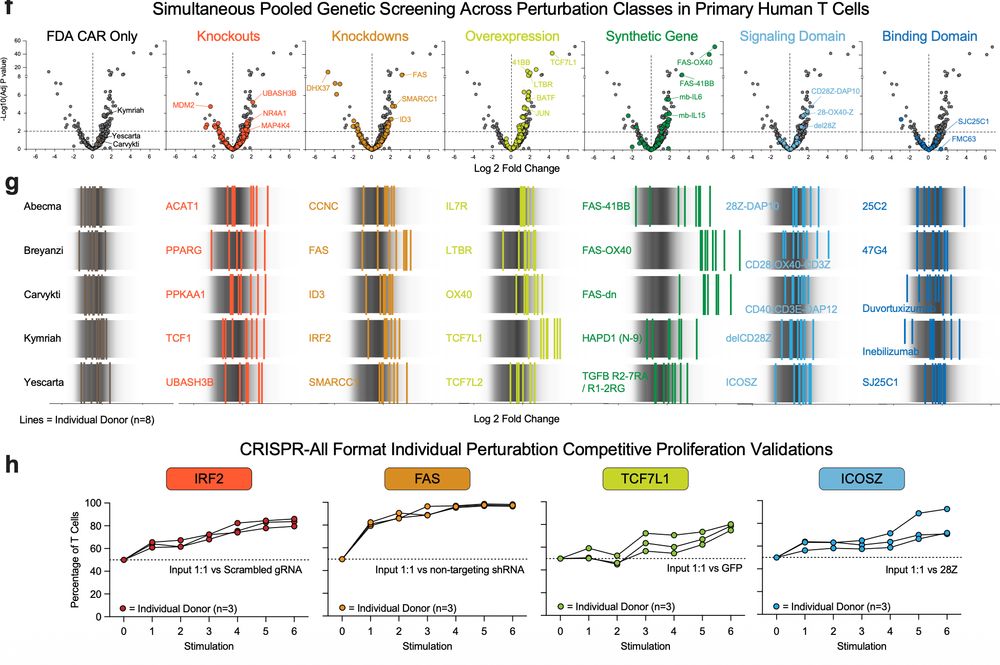
Learn more in the preprint: www.biorxiv.org/content/10.1...

Learn more in the preprint: www.biorxiv.org/content/10.1...

Evaluating them in matched conditions allowed the team to precisely identify which edits enhance function under chronic stimulation.

Evaluating them in matched conditions allowed the team to precisely identify which edits enhance function under chronic stimulation.


Read more: www.nature.com/articles/s41...

Read more: www.nature.com/articles/s41...

Evo was able to produce novel proteins that inhibited SpCas9 and improved phage survival, demonstrating its ability to propose functional products in systems where sequence-based approaches often fail.

Evo was able to produce novel proteins that inhibited SpCas9 and improved phage survival, demonstrating its ability to propose functional products in systems where sequence-based approaches often fail.
Prompted on the genomic contexts typical of these pairs, Evo successfully generated a range of diverse candidates, including several experimentally confirmed toxins and antitoxins.

Prompted on the genomic contexts typical of these pairs, Evo successfully generated a range of diverse candidates, including several experimentally confirmed toxins and antitoxins.
In sequence-recovery tests, Evo reliably reconstructed conserved genes from partial inputs, with accuracy improving across model versions.

In sequence-recovery tests, Evo reliably reconstructed conserved genes from partial inputs, with accuracy improving across model versions.
Read today in @science.org: www.science.org/doi/10.1126/...

Read today in @science.org: www.science.org/doi/10.1126/...
Blog: arcinstitute.org/news/large-s...
Video: youtube.com/watch?time_continue=1&v=DHg_TkN15XY

Blog: arcinstitute.org/news/large-s...
Video: youtube.com/watch?time_continue=1&v=DHg_TkN15XY
Learn more in the paper: www.nature.com/articles/s41...

Learn more in the paper: www.nature.com/articles/s41...
This means researchers can now choose variants optimized for maximum efficiency, specificity, or a balance of both.

This means researchers can now choose variants optimized for maximum efficiency, specificity, or a balance of both.


Existing recombinases, however, have limitations–managing only ~5% efficiency & often hitting hundreds of off-target sites.

Existing recombinases, however, have limitations–managing only ~5% efficiency & often hitting hundreds of off-target sites.
Learn more in the full paper: www.nature.com/articles/s41...

Learn more in the full paper: www.nature.com/articles/s41...
Unlike targeting HSP90, inhibiting PTGES3 offers a potentially more specific way to block AR without broadly disrupting the heat shock response.

Unlike targeting HSP90, inhibiting PTGES3 offers a potentially more specific way to block AR without broadly disrupting the heat shock response.
But loss of PTGES3 blocked tumor growth across multiple models of aggressive, therapy-resistant prostate cancer.

But loss of PTGES3 blocked tumor growth across multiple models of aggressive, therapy-resistant prostate cancer.


